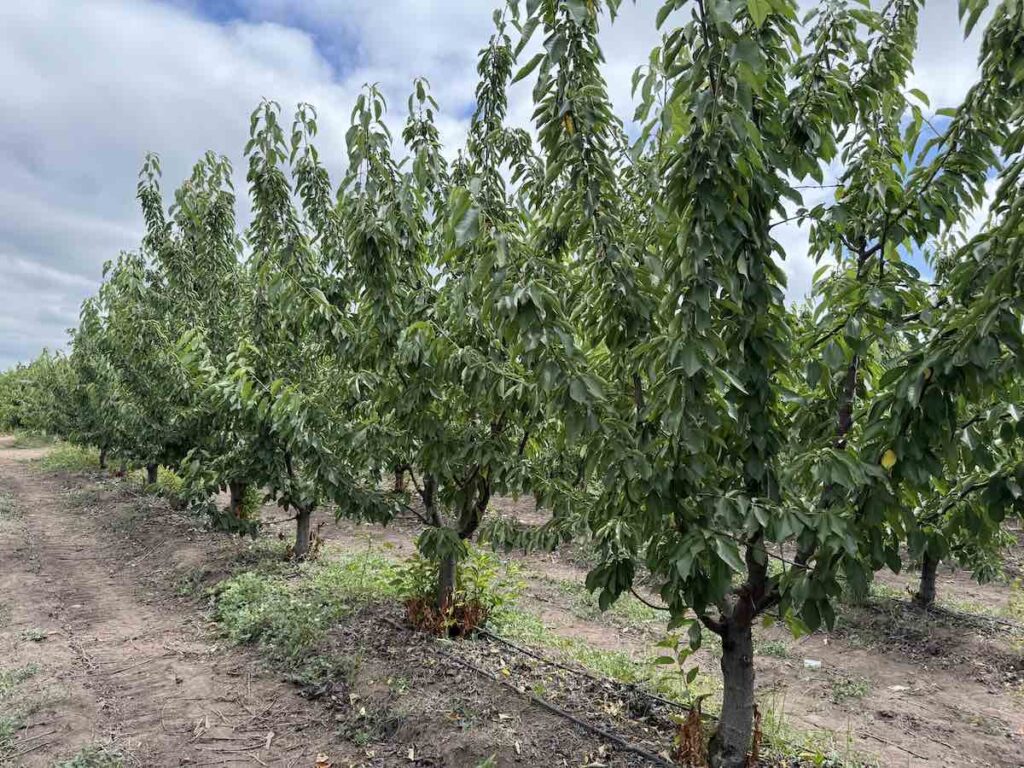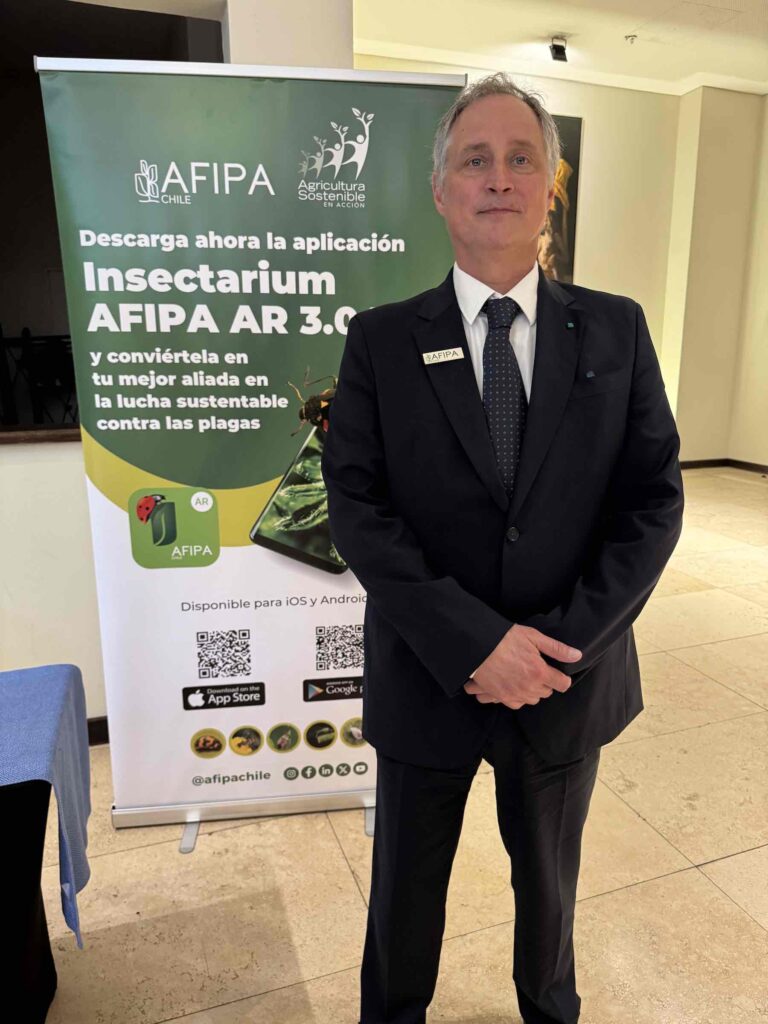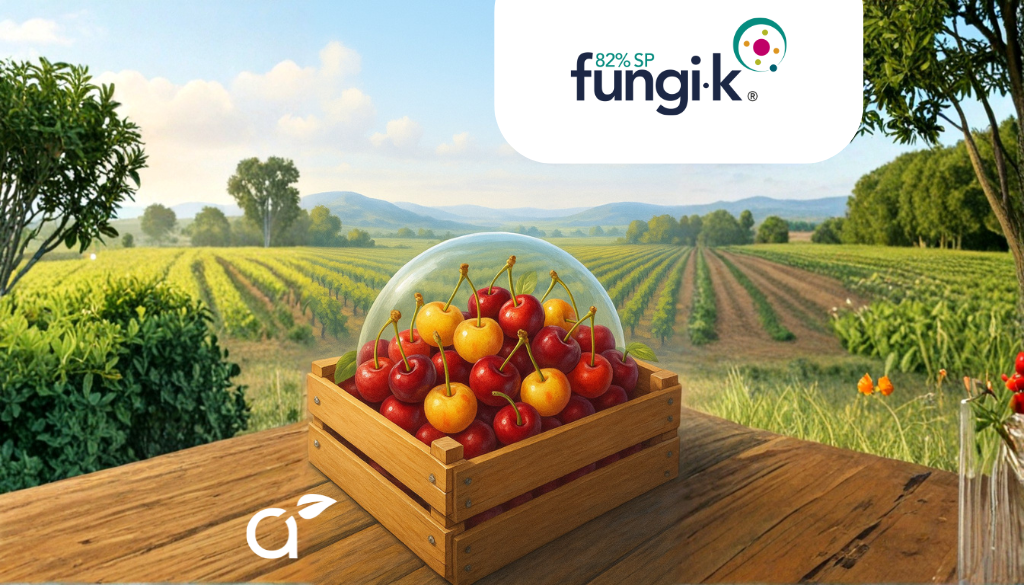Water and heat stress are crucial factors that significantly impact the development and production of cherry trees. These adverse conditions can affect their growth, flowering, pollination, and fruit quality.
The El Niño phenomenon, as well as causing severe flooding in winter and late rains in spring, will generate extreme temperatures during the coming months; it is necessary to pay attention and carry out all the necessary management to prevent high radiation, low humidity and high temperatures from generating thermal-hydric stress in plants.
Water stress
Cherry trees are sensitive to water availability. Water shortages, whether due to prolonged drought or improper irrigation practices, can lead to decreased root growth, affecting nutrient uptake and causing plant stress. This can result in premature fruit drop, decreased fruit size, and in extreme cases, plant death.
Thermal stress
Thermal stress is the elevation of temperature for a sufficiently long period that can cause irreversible damage to the metabolism and development of plants (Porch and Hall, 2013). Most plants are sensitive to the stress caused by high temperatures and suffer when these are too low or too high with respect to the thresholds defined for each variable. In the case of the cherry tree, the ideal development range is between 18 and 24 °C; if temperatures are higher than 36 °C, its metabolism stops and oxidative damage begins to occur in the different organs of the plant (Lemus, 2005). Several authors agree that stomatal closure is imminent above 30ºC of ambient temperature.
When conditions are ideal for cherry plants, these stomata are open and a perfect balance is maintained between the release of water vapor into the atmosphere and, in turn, the capture of CO2 to be transformed into sugars, through the physiological cycles inherent to photosynthesis (Tapia, 2019). Stomatal regulation is a reaction of plants that helps mitigate the harmful effects caused by water deficit and/or thermal stress. This regulatory process results in a reduction in the rate of transpiration and gas exchange due to the closure of stomata (Blaya et. al. 2021).

If the stomata are closed, the process described above does not take place, generating negative consequences for the plants, because they cannot carry out a correct gas exchange with the atmosphere.
It is necessary to pay attention to the signals that plants give in stress situations and to use the available tools, such as the measurement of stomatal conductance or conductivity (gs) which measures the vapor flow that is expelled through the process of transpiration by means of the stomata, generally measured in mmol m⁻² s⁻¹.
If the stomata are closed, there will be a decrease in stomatal conductance and, therefore, a loss of water through transpiration. This will reduce the photosynthetic rate and all processes dependent on photosynthesis, including sugar reserves, will have a negative impact as the main carbon source.
The practices of using strategies to control or rather mitigate thermal stress should be aimed at doing so in a preventive manner and can even be evaluated pre-harvest in the event of very sensitive events for the crop.
To do?

To mitigate the problems described above, management strategies must be implemented, such as efficient irrigation systems to maintain optimal soil moisture levels, and the use of techniques to protect against extreme temperatures, such as the use of sprinkler irrigation systems to reduce thermal stress during heat waves.
Of course, the use of sunblocks or sunscreens can also be a useful management strategy to mitigate heat stress in cherry trees. These sunscreens can be applied to plants to reduce the direct impact of solar radiation, especially during periods of high temperatures.
"Advances in research and development seek cherry varieties that are more resistant to water and heat stress, as well as sustainable agricultural practices that help mitigate these challenges, ensuring more stable and quality production in cherry crops.s".
Sunscreens, usually made from substances such as calcium carbonate or kaolin, are applied as a thin layer to the leaves and branches of trees. These products reflect some of the sun's radiation, reducing heat absorption by plants. This can help reduce heat stress and minimize damage caused by excess sunlight, maintaining cooler temperatures around leaves and reducing transpiration.
Applying sunscreen as a management measure is a practice used in several crops, including cherries, to protect plants from heat stress and minimize the negative effects of high temperatures. This technique can be especially beneficial during periods of extreme heat, helping to preserve good plant condition and their ability to produce quality fruit.
In conclusion, an adequate irrigation replenishment strategy, complemented by the use of different formulations (free amino acids, algae extracts, phospholipids and/or products whose formulations are based on the nutritional/biostimulant pathway) can be very useful to mitigate the effects of thermal stress in cherry cultivation; such management should be considered from pre-harvest onwards, especially taking into account that extreme temperatures are expected during the summer season.








